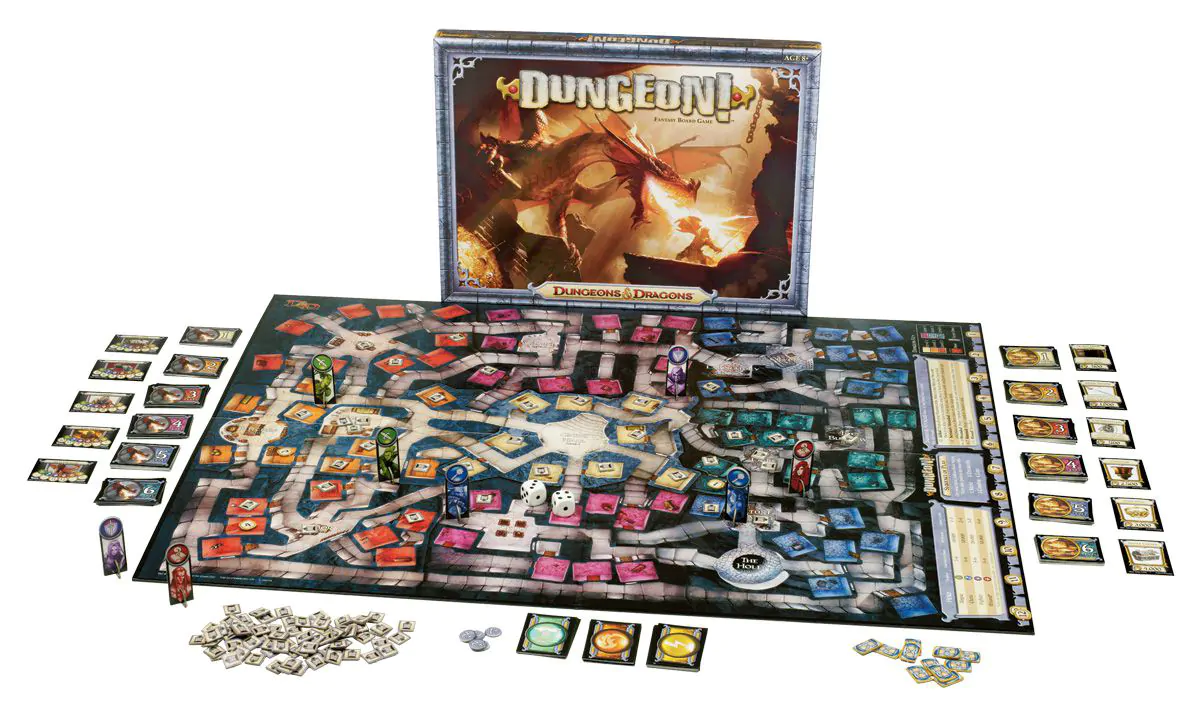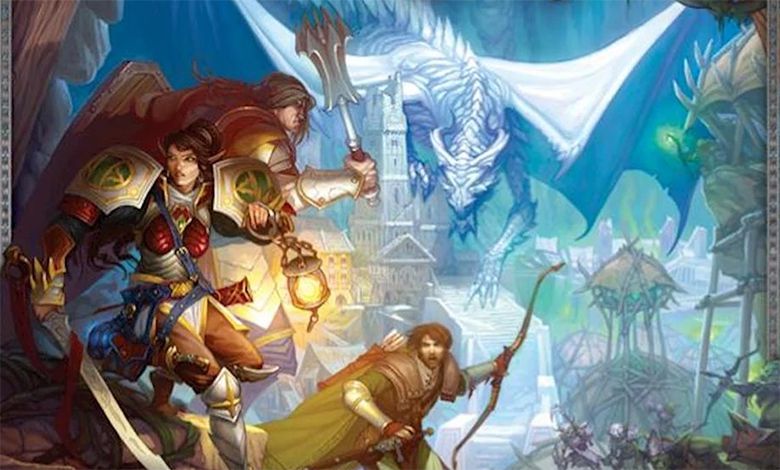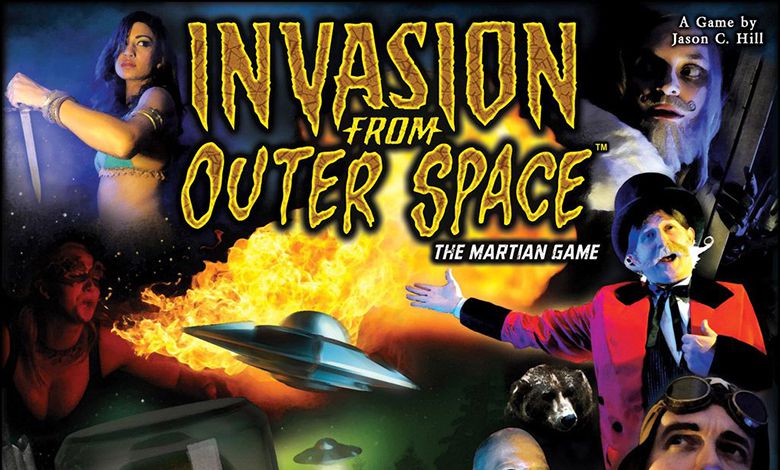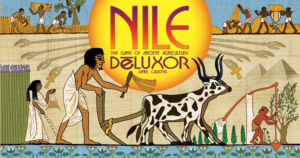
Publisher: Minion Games
Designers: Daniel Callister and James Mathe
Artist: Chuck Whelon
Year: 2011
Players: Two to six players
Ages: 8+
Playing Time: 30 Minutes
MSRP: $26.99
A while back I did a review of Nile, the original edition, and you can go back and take a look at it here. This new version of Nile, called the Deluxor edition, is not an expansion to Nile, but a new release of the game that has been expanded.
The new version can now be played by 2-6 players, expanding from the original 2-5. They were able to do this by expanding the number of crops. In addition to the Papyrus, Wheat, Flax, Castor, and Lettuce, there is now Grape and Onion added to the crop selection. If you have less than six players you remove a crop or two to balance it out.
In a nutshell, Nile is basically a set collection game. All players start with five cards. A card is flipped over at the start of each turn and that card becomes the flood card, in other words the crop that can be harvested this turn. Harvesting means taking a card that you have played in front of you and moving it to your score pile.
After the harvest you can trade some cards if you wish by discarding two cards to draw one new one, or flip a new flood card by also discarding two cards. You can then plant crops from the cards in your hand by playing two or more matching cards in front of you, or adding to existing melds you already have planted. The catch here is that you can’t plant a crop that another player already has in play UNLESS you can play more cards than they have showing. So if Jerry has two wheat cards on the table, you can only plant wheat by playing three or more wheat cards. By doing so, you force Jerry to discard his two wheat cards he has in play.
Finally, you draw two cards from the top of the draw pile and play passes to the next player, triggering a new 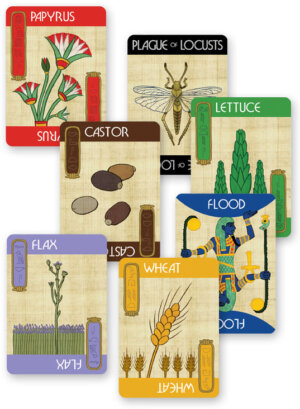
In addition to the two new crops, there are also stone cards. Stone can’t be added to your scoring pile, or harvested, but they do allow you to build one of the three monument cards included in the game. The monuments give you a special advantage as long as you can control them.
Controlling the Wall monument means that the other players will have to outplant your crops by two cards instead of one in order to force you to discard them. So in the pervious example, if Jerry has two wheat cards and controls the Wall monument then it will take you four wheat cards instead of three to beat Jerry’s crop and make him discard it.
Controlling the Obelisk simply allows you to draw three cards at the end of your turn instead of the normal two, and controlling the Sphinx allows you to score two cards for each flood card revealed rather then the normal one.
To control a monument you just place some stone cards in front of you, like you are planting a crop, and then announce which monument you want. Place the monument in front of you by the stone crop you just planted. You can plant up to three Stone crops and control all three monuments. Other players can take control from you by planting a larger size stone crop and grabbing the monument for themselves.
The new version did add a lot to the original game. Controlling the monuments was fun and added a nice new dimension to Nile. I’m understanding the scoring better now, but I still recommend the simple counting of the number of scoring cards (highest number wins) if you want a simple version of the scoring or you can go with the real scoring rules if you want a more complex game.
The actual scoring rules are that at the end of the game, each player lays out their scoring cards in piles by crop type from least amount of cards to highest. So for example you would lay out 2 papyrus, 3 lettuce, 3 castor, 4 wheat and 5 flax (assuming those were the cards you have). Your lowest crop total is compared to the other player’s lowest total, and the one with the highest lowest total wins. Huh? Ok, your lowest pile is the 2 papyrus in the example above. Let’s pretend that your buddy Jerry was playing the game with you. His lowest pile is lettuce. He only has 1 lettuce. Since you have more in your lowest pile, you win the game. This is actually pretty strategic, but if you just want a light filler game then I still think simply counting the piles of scoring cards is good enough.
The cards in this version are glossy and much easier to shuffle than those in the original, and the box is big enough to hold all of the cards, even if you decide to sleeve them.
All in all, the original game was ok, and this version is better. If you haven’t picked up Nile, then I recommend getting this version. If you already own the original, then you can send in your original UPC code from the box and get the new version for $10 off; a nice deal.
[rwp-review id=”0″]
- A Dungeon Delve for Kids?: A Review of Dungeon! - Oct 24, 2022
- Better, Stronger, Faster | Descent: Journeys in the Dark Second Edition Reviewed - Oct 23, 2022
- Your Planet is Doomed!: Invasion from Outer Space Reviewed - Oct 22, 2022


